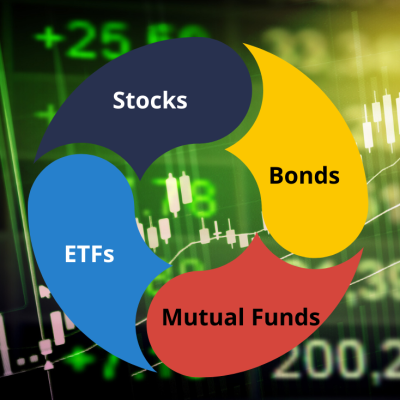How to Invest in the Right Sector
When choosing a sector to invest in, it is important to spread your portfolio between defensive sectors and cyclical sectors.

Sectors in Stocks
Investing in stocks is a serious business and not to be taken lightly, as there are several decisions to make before actually buying the stock of choice.
One of the tenets of good investing is to diversify stock investments to mitigate overall risk. Therefore, traders should invest in different market or industry sectors.
One of the most prominent questions for investors is “how to know which sector to invest in?”
Stocks are Classified into Sectors for Several Reasons
They are first classified under their relevant industry. They are also sorted to enable investors to compare the performance of stocks within a sector, and then compare sectors.
There are many different classification standards used to classify companies, like product-based or market-based classification methods, the Industry Classification Benchmark (ICB), the Thomson Reuters Business Classification (TRBC), and the Global Industry Classification Standard (GICS).
Classification systems matter when investing in index funds, as one might want to know which system has been used to build the portfolio.
Based on the Global Industry Classification Standard, there are 11 sectors, 24 industry groups and 68 industries. Based on their primary business activity, the eleven main market sectors are:
- Energy stocks
- Healthcare stocks
- Materials stocks
- Financial stocks
- Industrial stocks
- Information Technology stocks
- Consumer Discretionary stocks
- Consumer Staples stocks
- Real Estate stocks
- Telecommunications stocks
- Utility stocks
When investing, the best possible return on investment is required with the least risk to capital invested as possible. Therefore, one should invest both defensively and offensively, meaning that a portfolio should be a mix of stocks from defensive sectors and cyclical sectors.
Defensive Stocks vs. Cyclical Stocks
Defensive stocks are those that do well in an economic downturn, as they do not really depend on the market cycle. Stocks that pay dividends usually provide stable earnings, though not as stable as a company’s bond coupon, which is paid steadily – both regardless of the state of the economy.
The defensive sectors include utilities and consumer staples, as in an economic downturn, people do not stop heating their homes, neither do they stop eating. Having stocks from these sectors in a portfolio will cushion the blow of any economic downturn.
Cyclical stocks, on the other hand, move up and down depending on the economic climate at the time, as they are affected by changes in macroeconomics, real disposable income or geopolitical situations.
Cyclical stocks are represented by sectors like real estate or automobile, whose performance varies depending on how well the economy is doing. Therefore, the choice of investing in cyclical sectors will need some homework, analysis of the economic and market cycle in order to forecast potential growth.
How to Decide which Sector to Invest In
It can be difficult selecting cyclical stocks, as the return on investment will depend on how well an economy is doing.

Researching how each sector has performed in the past year and which stocks performed the best is required. One may potentially invest in the sectors that are posting the best returns at the current time. However, just because a sector is currently doing well, it doesn’t necessarily mean that it will do well in the future.
Ideally, it would be best to do some research, find out how specific sectors perform under various economic scenarios and analyse which economic situation is currently in effect. Make sure to consider economic and business cycles.
Any given economy has to face periods of expansion and contraction. These natural fluctuations are usually represented by 4 stages: expansion, peak, contraction and trough. In these stages, employment, consumer spending, inflation and growth vary, which can impact different market sectors.
Therefore, doing some research to get insight into which economic cycle is currently underway can provide an edge over other investors who do not take the time to look into the relationship between economic, business and market cycles.
For example, if interest rates are high, then basic material stocks might not perform too well because people don’t tend to buy houses when rates are up. Therefore, house construction diminishes and the need for materials drops. On the other hand, banks and other financial services might be able to gain higher profitability.
Traders want to ensure that their portfolios are diversified through several sectors. Choosing a sector to invest in therefore takes careful thought, time and research.
A Final Word: Diversification is Key
Understanding what diversification is and how to use it in an investment strategy will definitely help reduce the risk of a portfolio. This is achieved by choosing to invest in a mix of financial products.
In investment, diversification is part of any risk and money management strategy. It aims to limit market exposure on a single asset or even on a single type of risk to protect investment capital.

By investing in different sectors, positive performances will balance negative ones, which will reduce the overall risk of the portfolio.
One of the main reasons to diversify a portfolio is that not all stocks of all types of investment vehicles perform well at the same time. After all, different sectors and financial markets are not affected in the same way by world events or changes in the economic situation.
When investing, it’s important to consider the different types of risks and how they can affect a portfolio. Among the most important risks to be aware of are:
- interest rate risk
- currency risk
- inflation risk
- equity risk
- liquidity risk
- credit risk
- horizon risk
- concentration risk
- geopolitical risk
- regulatory risk
- foreign investment risk



